37 Books Published by University of Georgia Press on AALBC — Book Cover Collage
 Practical Radicalism and the Great Migration: The Cultural Geography of the Scott Newspaper Syndicate
Practical Radicalism and the Great Migration: The Cultural Geography of the Scott Newspaper Syndicate
by Thomas AielloUniversity of Georgia Press (Feb 15, 2023)
Read Detailed Book Description
This book’s predecessor, The Grapevine of the Black South, emphasized the owners of the Atlanta Daily World and its operation of the Scott Newspaper Syndicate between 1931 and 1955. In a pragmatic effort to avoid racial confrontation developing from white fear, newspaper editors developed a practical radicalism that argued on the fringes of racial hegemony, saving their loudest vitriol for tyranny that was not local and thus left no stake in the game for would-be white saboteurs. Thomas Aiello reexamined historical thinking about the Depression-era Black South, the information flow of the Great Migration, the place of southern newspapers in the historiography of Black journalism, and even the ideological and philosophical underpinnings of the civil rights movement.
With Practical Radicalism and the Great Migration, Aiello continues that analysis by tracing the development and trajectory of the individual newspapers of the Syndicate, evaluating those with surviving issues, and presenting them as they existed in proximity to their Atlanta hub. In so doing, he emphasizes the thread of practical radicalism that ran through Syndicate editorial policy. Practical Radicalism and the Great Migration is a supplement to The Grapevine of the Black South, providing a fuller picture of the Scott Newspaper Syndicate and the Black press in the 1930s, 1940s, and 1950s.
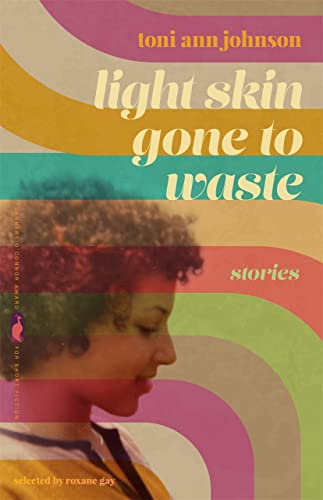 Light Skin Gone to Waste
Light Skin Gone to Waste
by Toni Ann JohnsonUniversity of Georgia Press (Oct 15, 2022)
Read Detailed Book Description
Toni Ann Johnson has been named this year’s winner of the Flannery O’Connor Award for Short Fiction. Her short story collection Light Skin Gone to Waste will be published by the University of Georgia Press in fall 2022.
Flannery O’Connor series editor Roxane Gay said of the collection:
Light Skin Gone to Waste is one of the most engrossing short story collections I’ve read in recent memory. These interconnected stories about a black family living in a predominantly white suburb of New York City are impeccably written, incisive, often infuriating and unforgettable. At the center of many of these stories is Philip Arrington, a psychologist who tries to reshape the world to his liking as he moves through it, regardless of the ways his actions affect the people in his intimate orbit. With a deft eye for detail, crisp writing, and an uncanny understanding of human frailties, Toni Ann Johnson has created an endlessly interesting American family portrait.”
In 1962 Philip Arrington, a psychologist with a PhD from Yeshiva, arrives in the small, mostly blue-collar town of Monroe, New York, to rent a house for himself and his new wife. They’re Black, something the man about to show him the house doesn’t know. With that, we’re introduced to the Arringtons: Phil, Velma, his daughter Livia (from a previous marriage), and his youngest, Madeline, soon to be born. They're cosmopolitan. Sophisticated. They're also troubled, arrogant, and throughout the linked stories, falling apart.
We follow the family as Phil begins his private practice, as Velma opens her antiques shop, and as they buy new homes, collect art, go skiing, and have overseas adventures. It seems they've made it in the white world. However, young Maddie, one of the only Black children in town, bears the brunt of the racism and the invisible barriers her family's money, education, and determination can't free her from. As she grows up and realizes her father is sleeping with white women, her mother is violently mercurial, and her half-sister resents her, Maddie must decide who she is despite, or perhaps precisely because of, her family.
 In Search of Liberty: African American Internationalism in the Nineteenth-Century Atlantic World
In Search of Liberty: African American Internationalism in the Nineteenth-Century Atlantic World
by Ronald Angelo Johnson and Ousmane K. Power-GreeneUniversity of Georgia Press (Jul 15, 2021)
Read Detailed Book Description
In Search of Liberty explores how African Americans, since the founding of the United States, have understood their struggles for freedom as part of the larger Atlantic world. The essays in this volume capture the pursuits of equality and justice by African Americans across the Atlantic World through the end of the nineteenth century, as their fights for emancipation and enfranchisement in the United States continued. This book illuminates stories of individual Black people striving to escape slavery in places like Nova Scotia, Louisiana, and Mexico and connects their efforts to emigration movements from the United States to Africa and the Caribbean, as well as to Black abolitionist campaigns in Europe.
By placing these diverse stories in conversation, editors Ronald Angelo Johnson and Ousmane K. Power-Greene have curated a larger story that is only beginning to be told. By focusing on Black internationalism in the eighteenth and nineteenth centuries, In Search of Liberty reveals that Black freedom struggles in the United States were rooted in transnational networks much earlier than the better-known movements of the twentieth century.
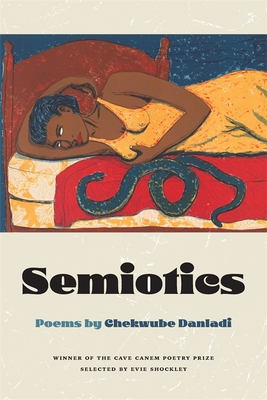 Semiotics: Poems
Semiotics: Poems
by Chekwube Danladi
University of Georgia Press (Sep 15, 2020)
Read Detailed Book Description
The poems in Chekwube Danladi’s debut collection ardently expose unnamed spaces of agency, proclaiming power and beauty through an unaccustomed yearning. Semiotics contends with the thresholds, eagerly transgressing the limits of material and spiritual realms in pursuit of personal and collective liberation. These poems negotiate a captive erotic condition and augur a hesitant yet lush embodiment, unearthing a Black femininity preoccupied with retrieving its unfettered freedom by any means. Activating a many-layered language that is at once political and delicate, Danladi conjures the unsightly and the sacred across poems that are vigilant, penetrating, and deeply evocative.
 An Uncommon Faith: A Pragmatic Approach to the Study of African American Religion
An Uncommon Faith: A Pragmatic Approach to the Study of African American Religion
by Eddie S. Glaude Jr.University of Georgia Press (Nov 15, 2018)
Read Detailed Book Description
With An Uncommon Faith Eddie S. Glaude Jr. makes explicit his pragmatic approach to the study of African American religion. He insists that scholars take seriously what he calls black religious attitudes, that is, enduring and deep-seated dispositions tied to a transformative ideal that compel individuals to be otherwise?no matter the risk. This claim emerges as Glaude puts forward a rather idiosyncratic view of what the phrase “African American religion” offers within the context of a critically pragmatic approach to writing African American religious history.Ultimately, An Uncommon Faith reveals how pragmatism has shaped Glaude’s scholarship over the years, as well as his interpretation of black life in the United States. In the end, his analysis turns our attention to those “black souls” who engage in the arduous task of self-creation in a world that clings to the idea that white people matter more than others. It is a task, he argues, that requires an uncommon faith and deserves the close attention of scholars of African American religion.
 The Grapevine of the Black South: The Scott Newspaper Syndicate in the Generation Before the Civil Rights Movement
The Grapevine of the Black South: The Scott Newspaper Syndicate in the Generation Before the Civil Rights Movement
by Thomas AielloUniversity of Georgia Press (Nov 01, 2018)
Read Detailed Book Description
In the summer of 1928, William Alexander Scott began a small four-page weekly with the help of his brother Cornelius. In 1930 his Atlanta World became a semiweekly, and the following year W. A. began to implement his vision for a massive newspaper chain based out of Atlanta: the Southern Newspaper Syndicate, later dubbed the Scott Newspaper Syndicate. In April 1931 the World had become a triweekly, and its reach began drifting beyond the South.
With The Grapevine of the Black South, Thomas Aiello offers the first critical history of this influential newspaper syndicate, from its roots in the 1930s through its end in the 1950s. At its heyday, more than 240 papers were associated with the Syndicate, making it one of the biggest organs of the black press during the period leading up to the classic civil rights era (1955-68).
In the generation that followed, the Syndicate helped formalize knowledge among the African American population in the South. As the civil rights movement exploded throughout the region, black southerners found a collective identity in that struggle built on the commonality of the news and the subsequent interpretation of that news. Or as Gunnar Myrdal explained, the press was “the chief agency of group control. It told the individual how he should think and feel as an American Negro and created a tremendous power of suggestion by implying that all other Negroes think and feel in this manner.” It didn’t create a complete homogeneity in black southern thinking, but it gave thinkers a similar set of tools from which to draw.
 States’ Laws on Race and Color
States’ Laws on Race and Color
by Pauli MurrayUniversity of Georgia Press (Jun 02, 2016)
Read Detailed Book Description
This remarkable, hard-to-find resource is an exhaustive compilation of state laws and local ordinances in effect in 1950 that mandated racial segregation and of pre-Brown-era civil rights legislation.
The volume cites legislation from forty-eight states and the District of Columbia, and ordinances of twenty-four major cities across the country. The complete text of each law or ordinance is included, along with occasional notes about its history and the extent to which it was enforced.
Other relevant information found in the volume ranges widely: the texts of various Supreme Court rulings; international documents; federal government executive orders, departmental rules, regulations, and directives; legislation related to aliens and Native Americans; and more.
In his introduction, Davison M. Douglas comments on the legislation compiled in the book and its relevance to scholars today and also provides biographical background on Pauli Murray, the attorney who was the volume’s original editor.
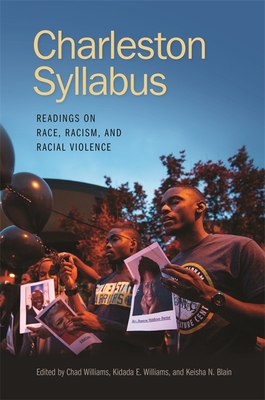 Charleston Syllabus: Readings on Race, Racism, and Racial Violence
Charleston Syllabus: Readings on Race, Racism, and Racial Violence
by Kidada E. WilliamsUniversity of Georgia Press (May 15, 2016)
Read Detailed Book Description
On June 17, 2015, a white supremacist entered Emanuel AME Church in Charleston, South Carolina, and sat with some of its parishioners during a Wednesday night Bible study session. An hour later, he began expressing his hatred for African Americans, and soon after, he shot nine church members dead, the church’s pastor and a South Carolina state senator, Rev. Clementa C. Pinckney, among them. The ensuing manhunt for the shooter and investigation of his motives revealed his beliefs in white supremacy and reopened debates about racial conflict, southern identity, systemic racism, civil rights, and the African American church as an institution.
In the aftermath of the massacre, Professors Chad Williams, Kidada E. Williams, and Keisha N. Blain sought a way to put the murder—and the subsequent debates in the media—in the context of America’s tumultuous history of race relations and racial violence on a global scale. They created the Charleston Syllabus on June 19, starting it as a hashtag on Twitter linking to scholarly works on the myriad of issues related to the murder. The syllabus’s popularity exploded and is already being used as a key resource in discussions of the event.
Charleston Syllabus is a reader—a collection of new essays and columns published in the wake of the massacre, along with selected excerpts from key existing scholarly books and general-interest articles. The collection draws from a variety of disciplines—history, sociology, urban studies, law, critical race theory—and includes discussion questions and a selected and annotated bibliography for further reading, drawing from such texts as the confederate constitution, South Carolina’s secession declaration, songs, poetry, slave narratives, and literacy texts. As timely as it is necessary, the book will be a valuable resource for understanding the roots of American systemic racism, white privilege, the uses and abuses of the Confederate flag and its ideals, the black church as a foundation for civil rights activity and state violence against such activity, and critical whiteness studies.
This book is dedicated to
Cynthia Hurd
Susie Jackson
Ethel Lance
DePayne Middleton-Doctor
Clementa Pinckney
Tywanza Sanders
Daniel Simmons Sr.
Sharonda Singleton
Myra Thompson
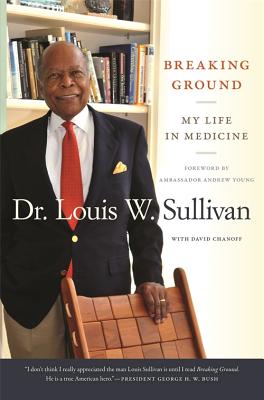 Breaking Ground: My Life in Medicine
Breaking Ground: My Life in Medicine
by David Chanoff and Louis SullivanUniversity of Georgia Press (Feb 01, 2016)
Read Detailed Book Description
In Breaking Ground, Louis W. Sullivan, M.D. recounts his extraordinary life including his childhood in Jim Crow south Georgia and continuing through his trailblazing endeavors training to become a physician in an almost entirely white environment in the Northeast. He was the founding dean and president of Morehouse School of Medicine in Atlanta, and served as secretary of the U.S. Department of Health and Human Services in President George H. W. Bush’s administration. Throughout his extraordinary life Sullivan has passionately championed improved access to health care for all Americans and greater diversity among the nation’s health professionals.Sullivan’s life €•from Morehouse to the White House and his ongoing work with medical students in South Africa €•is the embodiment of the hopes and progress that the civil rights movement fought to achieve. His story should inspire future generations €•of all backgrounds €•to aspire to great things.
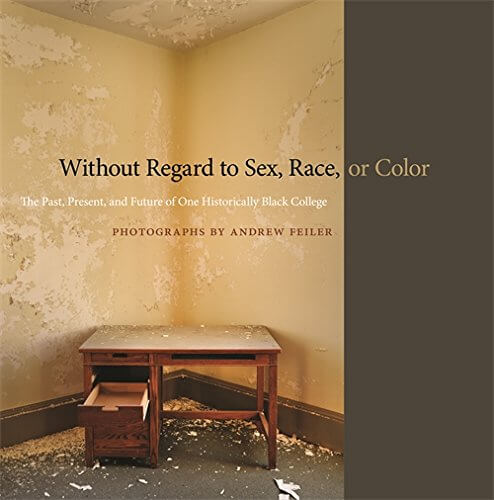 Without Regard to Sex, Race, or Color: The Past, Present, and Future of One Historically Black College
Without Regard to Sex, Race, or Color: The Past, Present, and Future of One Historically Black College
by Andrew FeilerUniversity of Georgia Press (Oct 01, 2015)
Read Detailed Book Description
“I was granted unique access to the hauntingly silent campus of Morris Brown with the intent to illuminate the stories told in its stilled classrooms and hallways. In the resulting body of work, the proud past remains in the extraordinary quality of the facilities, school desks arrayed ready for class, faces of students in photographs from happier days. The challenging present resides starkly in broken stained glass, evidence of havoc wreaked by scrappers, hints of homeless humanity. And the uncertain future weighs heavily in the headlines: bankruptcy proceedings, a forthcoming professional football stadium next door, recycled pronouncements of plans to revitalize the surrounding neighborhood. Mixed with all of these are layers of timeless emotion… wistfulness, pride, angst, loneliness, hope.
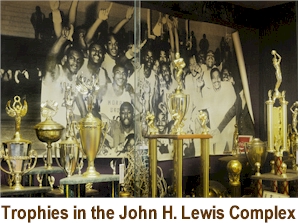
A book of this work has just been published by the University of Georgia Press in association with the Georgia Humanities Council. The publication includes ten historical images, sixty contemporary images and essays by Robert E. James, Pellom McDaniels III, Amalia K. Amaki, and Loretta Parham. An accompanying exhibition opens later this fall [2015] in Atlanta. Opportunities are being sought for subsequent showings.”
This gathering of sixty images, along with the essays that frame them, gives us a new way to think about the too often troubled status of historically black colleges and universities (HBCUs). The bell in the clock tower at Atlanta’s Morris Brown College bears an inscription about the ideal of educational access, that it be “without regard to sex, race, or color.” Yet most of the Morris Brown campus has lain silent for more than a decade. Established in 1881, it was all but shut down in 2002 after years of fiscal hardship were capped by a mismanagement scandal. Pride still runs high among its alumni, however, and its current leadership vows to revive the school. Meanwhile, as Andrew Feiler’s stirring photos show, Morris Brown is literally falling apart.
In the spirit of those photographers who have documented the physical decline of our valued institutions―from small family farms to entire cities―Feiler points his lens at one embattled place and dares us to look away. Aiming to “open minds, trigger emotion, stimulate discussion, and, perhaps, prompt action,” his images project a new layer of meaning onto the Morris Brown story. We see classrooms, dorms, gym facilities, and other spaces no longer alive with students, faculty, and staff but rather mired in a state of uncertainty where hopes of normality’s return mutely battle a host of unwelcome alternate futures. We see how time passes without regard for academic years, regular maintenance cycles, or the other comings and goings that would ordinarily call attention to the leaks, invading animals, acts of vandalism, and other forces working to peel the paint from Morris Brown’s walls, buckle its floors, and molder its furnishings. We see garbage piling up alongside sports trophies, scientific equipment, and other vestiges of the prouder past we would rather remember.
Feiler’s photos are accompanied by writings that address the college’s profound impact on one family, history and memory, the documentary and narrative powers of photography, and the place of HBCUs in American public life. Images and text combine powerfully to show us what happens when a place meant to be honored is left to its own.
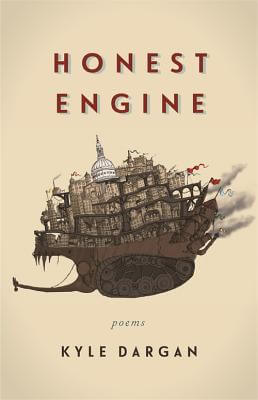 Honest Engine: Poems
Honest Engine: Poems
by Kyle DarganUniversity of Georgia Press (Apr 01, 2015)
Read Detailed Book Description
In this his fourth collection, award-winning poet Kyle Dargan examines the mechanics of the heart and mind as they are weathered by loss. Following a spate of deaths among family and friends, Dargan chooses to present not color-negative elegies but self-portraits that capture what of these departed figures remains within him. Amid this processing of mortality, it becomes clear that he has arrived at a turning point as a writer and a man.As the title suggests, Dargan aspires toward an unflinching honesty. These poems do not purport to possess life’s answers or seek to employ language to mask what they do not know. Dargan confesses as a means of reaching out to the nomadic human soul and inviting it to accompany him on a walk toward the unknown.
 Flush Times and Fever Dreams: A Story of Capitalism and Slavery in the Age of Jackson
Flush Times and Fever Dreams: A Story of Capitalism and Slavery in the Age of Jackson
by Joshua D. RothmanUniversity of Georgia Press (May 01, 2014)
Read Detailed Book Description
In 1834 Virgil Stewart rode from western Tennessee to a territory known as the "Arkansas morass" in pursuit of John Murrell, a thief accused of stealing two slaves. Stewart's adventure led to a sensational trial and a wildly popular published account that would ultimately help trigger widespread violence during the summer of 1835, when five men accused of being professional gamblers were hanged in Vicksburg, nearly a score of others implicated with a gang of supposed slave thieves were executed in plantation districts, and even those who tried to stop the bloodshed found themselves targeted as dangerous and subversive. Using Stewart's story as his point of entry, Joshua D. Rothman details why these events, which engulfed much of central and western Mississippi, came to pass. He also explains how the events revealed the fears, insecurities, and anxieties underpinning the cotton boom that made Mississippi the most seductive and exciting frontier in the Age of Jackson.
As investors, settlers, slaves, brigands, and fortune-hunters converged in what was then America's Southwest, they created a tumultuous landscape that promised boundless opportunity and spectacular wealth. Predicated on ruthless competition, unsustainable debt, brutal exploitation, and speculative financial practices that looked a lot like gambling, this landscape also produced such profound disillusionment and conflict that it contained the seeds of its own potential destruction. Rothman sheds light on the intertwining of slavery and capitalism in the period leading up to the Panic of 1837, highlighting the deeply American impulses underpinning the evolution of the slave South and the dizzying yet unstable frenzy wrought by economic flush times. It is a story with lessons for our own day.
Published in association with the Library Company of Philadelphia's Program in African American History. A Sarah Mills Hodge Fund Publication.
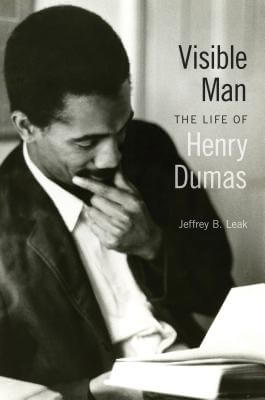 Visible Man: The Life Of Henry Dumas
Visible Man: The Life Of Henry Dumas
by Jeffrey B. LeakUniversity of Georgia Press (Apr 15, 2014)
Read Detailed Book Description
Henry Dumas (1934–1968) was a writer who did not live to see most of his fiction and poetry in print. A son of Sweet Home, Arkansas, and Harlem, he devoted himself to the creation of a black literary cosmos, one in which black literature and culture were windows into the human condition. While he certainly should be understood in the context of the cultural and political movements of the 1960s—Black Arts, Black Power, and Civil Rights—his writing, and ultimately his life, were filled with ambiguities and contradictions.Dumas was shot and killed in 1968 in Harlem months before his thirty-fourth birthday by a white transit policeman under circumstances never fully explained. After his death he became a kind of literary legend, but one whose full story was unknown. A devoted cadre of friends and later admirers from the 1970s to the present pushed for the publication of his work. Toni Morrison championed him as “an absolute genius.” Amiri Baraka, a writer not quick to praise others, claimed that Dumas produced “actual art, real, man, and stunning.” Eugene Redmond and Quincy Troupe heralded Dumas’s poetry, short stories, and work as an editor of “little” magazines.With Visible Man, Jeffrey B. Leak offers a full examination of both Dumas’s life and his creative development. Given unprecedented access to the Dumas archival materials and numerous interviews with family, friends, and writers who knew him in various contexts, Leak opens the door to Dumas’s rich and at times frustrating life, giving us a layered portrait of an African American writer and his coming of age during one of the most volatile and transformative decades in American history.
 Breaking Ground: My Life in Medicine
Breaking Ground: My Life in Medicine
by David Chanoff and Louis SullivanUniversity of Georgia Press (Feb 01, 2014)
Read Detailed Book Description
While Louis W. Sullivan was a student at Morehouse College, Morehouse president Benjamin Mays said something to the student body that stuck with him for the rest of his life. €śThe tragedy of life is not failing to reach our goals,€ť Mays said. €śIt is not having goals to reach.€ť In Breaking Ground, Sullivan recounts his extraordinary life beginning with his childhood in Jim Crow south Georgia and continuing through his trailblazing endeavors training to become a physician in an almost entirely white environment in the Northeast, founding and then leading the Morehouse School of Medicine in Atlanta, and serving as secretary of Health and Human Services in President George H. W. Bush’s administration. Throughout this extraordinary life Sullivan has passionately championed both improved health care and increased access to medical professions for the poor and people of color. At five years old, Louis Sullivan declared to his mother that he wanted to be a doctor. Given the harsh segregation in Blakely, Georgia, and its lack of adequate schools for African Americans at the time, his parents sent Louis and his brother, Walter, to Savannah and later Atlanta, where greater educational opportunities existed for blacks. After attending Booker T. Washington High School and Morehouse College, Sullivan went to medical school at Boston University€•he was the sole African American student in his class. He eventually became the chief of hematology there until Hugh Gloster, the president of Morehouse College, presented him with an opportunity he couldn’t refuse: Would Sullivan be the founding dean of Morehouse’s new medical school? He agreed and went on to create a state-of-the-art institution dedicated to helping poor and minority students become doctors. During this period he established long-lasting relationships with George H. W. and Barbara Bush that would eventually result in his becoming the secretary of Health and Human Services in 1989. Sullivan details his experiences in Washington dealing with the burgeoning AIDS crisis, PETA activists, and antismoking efforts, along with his efforts to push through comprehensive health care reform decades before the Affordable Care Act. Along the way his interactions with a cast of politicos, including Thurgood Marshall, Jack Kemp, Clarence Thomas, Jesse Helms, and the Bushes, capture vividly a particular moment in recent history. Sullivan’s life from Morehouse to the White House and his ongoing work with medical students in South Africa is the embodiment of the hopes and progress that the civil rights movement fought to achieve. His story should inspire future generations€•of all backgrounds€•to aspire to great things.
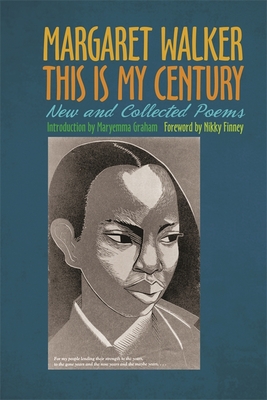 This Is My Century: New and Collected Poems (Revised)
This Is My Century: New and Collected Poems (Revised)
by Maryemma GrahamUniversity of Georgia Press (Oct 15, 2013)
Read Detailed Book Description
Margaret Walker became the first African American to win a national literary award when her collection For My People was chosen for the Yale Series of Younger Poets in 1942. Over the next fifty years she enriched American literature in endless ways through her writings and, in 1993, she received the National Book Award for Lifetime Achievement.
This Is My Century is Walker’s own defining summation of her career. Selected by the author herself, the one hundred poems include thirty-seven previously uncollected pieces and the entire contents of three hard-to-find volumes: the award-winning For My People (1942), Prophets for a New Day (1970), and October Journey (1975).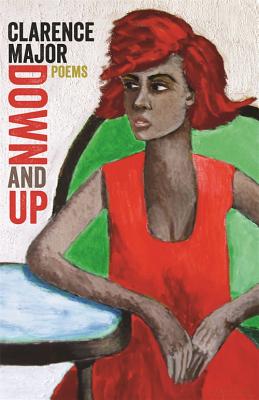 Down and Up: Poems
Down and Up: Poems
by Clarence MajorUniversity of Georgia Press (Oct 01, 2013)
Read Detailed Book Description
In Down and Up, Clarence Major makes use of American and European public places, their character and voice, to construct poems that explore the physical world juxtaposed sharply with the inner world. Sometimes realistic, sometimes dreamlike, these poems are dynamic, universal in theme, and acknowledge a debt to the great tradition of modern American poetry. Clear eyed and painterly, they explore wherever Major’s fancy takes him. His distinctive voice and compelling spatial and visual approach offer a connection between everyday human occurrences and the physical space they surround.
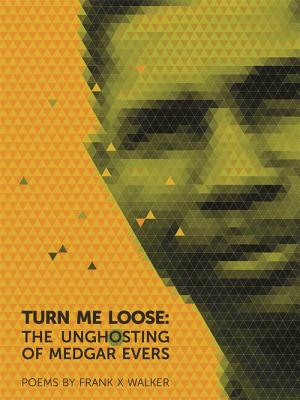 Turn Me Loose: The Unghosting of Medgar Evers
Turn Me Loose: The Unghosting of Medgar Evers
by Frank X. WalkerUniversity of Georgia Press (May 01, 2013)
Read Detailed Book Description
Around the void left by the murder of Medgar Evers in 1963, the poems in this collection speak, unleashing the strong emotions both before and after the moment of assassination. Poems take on the voices of Evers’s widow, Myrlie; his brother, Charles; his assassin, Byron De La Beckwith; and each of De La Beckwith’s two wives. Except for the book’s title,""Turn me loose,"" which were his final words, Evers remains in this collection silent. Yet the poems accumulate facets of the love and hate with which others saw this man, unghosting him in a way that only imagination makes possible.
 Break Any Woman Down
Break Any Woman Down
by Dana JohnsonUniversity of Georgia Press (Oct 15, 2012)
Read Detailed Book Description
In Break Any Woman Down, Dana Johnson explores race, identity, and alienation with unflinching honesty and vibrant language. Hip and seductive, her stories often feature women discovering their identities through sexual and emotional intimacy with the men in their lives.
In the title story, La Donna is a black stripper whose white boyfriend, an actor in adult movies, insists that she stop stripping. In “Melvin in the Sixth Grade,” eleven-year-old Avery has a crush on a white boy from Oklahoma who, like Avery, is an outsider in their suburban Los Angeles school. “Markers” is as much about a woman’s relationship with her mother as it is about the dissolution of her relationship with an older Italian man.
Dana Johnson has an intuitive sense of character and a gift for creating authentic voices. She effortlessly captures the rhythmic vernaculars of Los Angeles, the American South, and various immigrant communities as she brings to life the sometimes heavyhearted, but always persevering, souls who live there.
 At-Risk: Stories
At-Risk: Stories
by Amina GautierUniversity of Georgia Press (Sep 15, 2011)
Read Detailed Book Description
In Amina Gautier’s Brooklyn, some kids make it and some kids don’t, but not in simple ways or for stereotypical reasons. Gautier’s stories explore the lives of young African Americans who might all be classified as “at-risk,” yet who encounter different opportunities and dangers in their particular neighborhoods and schools and who see life through the lens of different family experiences.Gautier’s focus is on quiet daily moments, even in extraordinary lives; her characters do not stand as emblems of a subculture but live and breathe as people. In “The Ease of Living,” the young teen Jason is sent down south to spend the summer with his grandfather after witnessing the double murder of his two best friends, and he is not happy about it. A season of sneaking into as many movies as possible on one ticket or dunking girls at the pool promises to turn into a summer of shower chairs and the smell of Ben-Gay in the unimaginably backwoods town of Tallahassee. In “Pan Is Dead,” two half-siblings watch as the heroin-addicted father of the older one works his way back into their mother’s life; in “Dance for Me,” a girl on scholarship at a posh Manhattan school teaches white girls to dance in the bathroom in order to be invited to a party.As teenagers in complicated circumstances, each of Gautier’s characters is pushed in many directions. To succeed may entail unforgiveable compromises, and to follow their desires may lead to catastrophe. Yet within these stories they exist and can be seen as they are, in the moment of choosing.
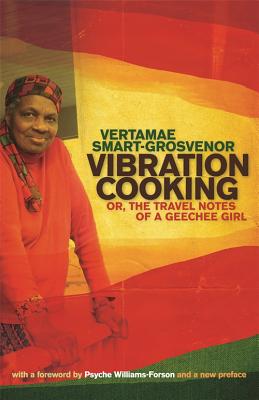 Vibration Cooking: or, The Travel Notes of a Geechee Girl
Vibration Cooking: or, The Travel Notes of a Geechee Girl
by Vertamae Smart-GrosvenorUniversity of Georgia Press (Apr 15, 2011)
Read Detailed Book Description
Vibration Cooking was first published in 1970, not long after the term “soul food” gained common use. While critics were quick to categorize her as a proponent of soul food, Smart-Grosvenor wanted to keep the discussion of her cookbook/memoir focused on its message of food as a source of pride and validation of black womanhood and black “consciousness raising.”In 1959, at the age of nineteen, Smart-Grosvenor sailed to Europe, “where the bohemians lived and let live.” Among the cosmopolites of radical Paris, the Gullah girl from the South Carolina low country quickly realized that the most universal lingua franca is a well-cooked meal. As she recounts a cool cat’s nine lives as chanter, dancer, costume designer, and member of the Sun Ra Solar-Myth Arkestra, Smart-Grosvenor introduces us to a rich cast of characters. We meet Estella Smart, Vertamae’s grandmother and connoisseur of mountain oysters; Uncle Costen, who lived to be 112 and knew how to make Harriet Tubman Ragout; and Archie Shepp, responsible for Collard Greens ŕ la Shepp, to name a few. She also tells us how poundcake got her a marriage proposal (she didn’t accept) and how she perfected omelettes in Paris, enchiladas in New Mexico, biscuits in Mississippi, and feijoida in Brazil. “When I cook, I never measure or weigh anything,” writes Smart-Grosvenor. “I cook by vibration.”This edition features a foreword by Psyche Williams-Forson placing the book in historical context and discussing Smart-Grosvenor’s approach to food and culture. A new preface by the author details how she came to write Vibration Cooking.
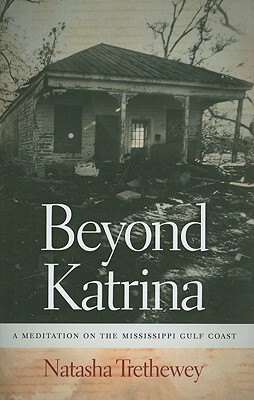 Beyond Katrina: A Meditation On The Mississippi Gulf Coast (Sarah Mills Hodge Fund Publication)
Beyond Katrina: A Meditation On The Mississippi Gulf Coast (Sarah Mills Hodge Fund Publication)
by Natasha TretheweyUniversity of Georgia Press (Sep 01, 2010)
Read Detailed Book Description
Beyond Katrina is poet Natasha Trethewey’s very personal profile of the Mississippi Gulf Coast and of the people there whose lives were forever changed by hurricane Katrina.Trethewey spent her childhood in Gulfport, where much of her mother’s extended family, including her younger brother, still lives. As she worked to understand the devastation that followed the hurricane, Trethewey found inspiration in Robert Penn Warren’s book Segregation: The Inner Conflict in the South, in which he spoke with southerners about race in the wake of the Brown decision, capturing an event of wide impact from multiple points of view. Weaving her own memories with the experiences of family, friends, and neighbors, Trethewey traces the erosion of local culture and the rising economic dependence on tourism and casinos. She chronicles decades of wetland development that exacerbated the destruction and portrays a Gulf Coast whose citizens—particularly African Americans—were on the margins of American life well before the storm hit. Most poignantly, Trethewey illustrates the destruction of the hurricane through the story of her brother’s efforts to recover what he lost and his subsequent incarceration.Renowned for writing about the idea of home, Trethewey’s attempt to understand and document the damage to Gulfport started as a series of lectures at the University of Virginia that were subsequently published as essays in the Virginia Quarterly Review. For Beyond Katrina, Trethewey has expanded this work into a narrative that incorporates personal letters, poems, and photographs, offering a moving meditation on the love she holds for her childhood home.
A Sarah Mills Hodge Fund Publication.
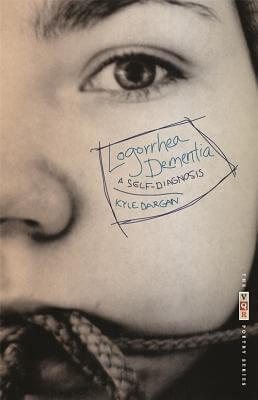 Logorrhea Dementia: A Self-Diagnosis (The VQR Poetry Ser.)
Logorrhea Dementia: A Self-Diagnosis (The VQR Poetry Ser.)
by Kyle DarganUniversity of Georgia Press (Sep 01, 2010)
Read Detailed Book Description
Attempting to stitch a quilt of language for the new millennium, Kyle Dargan finds himself in his third collection propelled forward by a mélange of voices?individuals passed on the street, journalists, philosophers, movie and cartoon characters, hip-hop emcees, and fellow poets?all of which build to a self-diagnosed logorrhea dementia. Dargan’s voice channels an America mentally fatigued from a decade of foreign conflict yet cautiously hopeful about the promise of the country’s renewed introspection.In these poems, rife with the anxieties of the aughts, Dargan seeks to destabilize social and cultural landscapes believed to be settled?breaking and clearing ground to lay the foundation for a new American perspective.
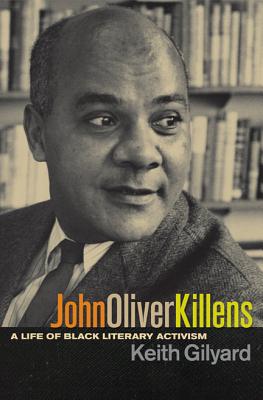 John Oliver Killens: A Life Of Black Literary Activism
John Oliver Killens: A Life Of Black Literary Activism
by Keith GilyardUniversity of Georgia Press (May 15, 2010)
Read Detailed Book Description
John Oliver Killens’s politically charged novels And Then We Heard the Thunder and The Cotillion; or One Good Bull Is Half the Herd, were nominated for the Pulitzer Prize. His works of fiction and nonfiction, the most famous of which is his novel Youngblood, have been translated into more than a dozen languages. An influential novelist, essayist, screenwriter, and teacher, he was the founding chair of the Harlem Writers Guild and mentored a generation of black writers at Fisk, Howard, Columbia, and elsewhere. Killens is recognized as the spiritual father of the Black Arts Movement. In this first major biography of Killens, Keith Gilyard examines the life and career of the man who was perhaps the premier African American writer-activist from the 1950s to the 1980s.Gilyard extends his focus to the broad boundaries of Killens’s times and literary achievement—from the Old Left to the Black Arts Movement and beyond. Figuring prominently in these pages are the many important African American artists and political figures connected to the author from the 1930s to the 1980s—W. E. B. Du Bois, Paul Robeson, Alphaeus Hunton, Langston Hughes, James Baldwin, Martin Luther King Jr., Malcolm X, Harry Belafonte, and Maya Angelou, among others.
 Black Nature: Four Centuries of African American Nature Poetry
Black Nature: Four Centuries of African American Nature Poetry
by Camille T. DungyUniversity of Georgia Press (Dec 01, 2009)
Read Detailed Book Description
Black Nature is the first anthology to focus on nature writing by African American poets, a genre that until now has not commonly been counted as one in which African American poets have participated.Black poets have a long tradition of incorporating treatments of the natural world into their work, but it is often read as political, historical, or protest poetry?anything but nature poetry. This is particularly true when the definition of what constitutes nature writing is limited to work about the pastoral or the wild.Camille T. Dungy has selected 180 poems from 93 poets that provide unique perspectives on American social and literary history to broaden our concept of nature poetry and African American poetics. This collection features major writers such as Phillis Wheatley, Rita Dove, Yusef Komunyakaa, Gwendolyn Brooks, Sterling Brown, Robert Hayden, Wanda Coleman, Natasha Trethewey, and Melvin B. Tolson as well as newer talents such as Douglas Kearney, Major Jackson, and Janice Harrington. Included are poets writing out of slavery, Reconstruction, the Harlem Renaissance, the Black Arts Movement, and late twentieth- and early twenty-first-century African American poetic movements.Black Nature brings to the fore a neglected and vital means of considering poetry by African Americans and nature-related poetry as a whole.A Friends Fund Publication.
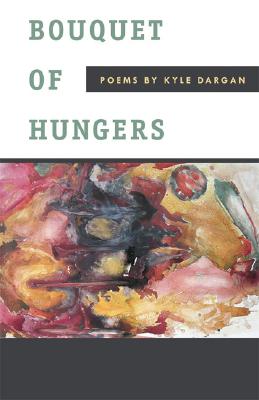 Bouquet of Hungers: Poems
Bouquet of Hungers: Poems
by Kyle DarganUniversity of Georgia Press (Oct 25, 2007)
Read Detailed Book Description
Kyle Dargan’s new collection of poetry reflects his many passions as a poet, his deep engagament with what it means to work in the African American literary tradition, and his lively voice, infused with hip-hop sensibility and idiom. Skillfully blending vernacular and elegant diction, his clipped and reflective phrasings create animated poems that take on a myriad of concerns. Moving through such subjects as a midnight wait in the Washington, D.C., bus station, men on exhibit at the 1904 World’s Fair, the sights and sounds of an Indiana karaoke bar, and an imagined escaped slave turned to stone, Dargan’s work continually shifts lenses to examine an America increasingly stifled by dogmas and inept social categories. At the core of the book is compassion for the individuals who populate it, and from that compassion grows a hunger for the old identities, in which we encase ourselves, to come undone.From "Palinode, Once Removed": The day we pursue metaphor, I will / teach them about the brain?how there is a center / to catch discrepancy between the expected / and the perceived. Stimulate the mechanism. / you are working in metaphor. / Though surprising / I am not a metaphor. This is: I am a period, / small and dark. If you read me correctly, / you are to stop. Pause. Breathe.
 Ralph Ellison: Emergence of Genius
Ralph Ellison: Emergence of Genius
by Lawrence P. JacksonUniversity of Georgia Press (Oct 01, 2007)
Read Detailed Book Description
Author, intellectual, and social critic, Ralph Ellison (1914-94) was a pivotal figure in American literature and history and arguably the father of African American modernism. Universally acclaimed for his first novel, Invisible Man, a masterpiece of modern fiction, Ellison was recognized with a stunning succession of honors, including the 1953 National Book Award. Despite his literary accomplishments and political activism, however, Ellison has received surprisingly sparse treatment from biographers. Lawrence Jackson’s biography of Ellison, the first when it was published in 2002, focuses on the author’s early life.
Powerfully enhanced by rare photographs, this work draws from archives, literary correspondence, and interviews with Ellison’s relatives, friends, and associates. Tracing the writer’s path from poverty in dust bowl Oklahoma to his rise among the literary elite, Jackson explores Ellison’s important relationships with other stars, particularly Langston Hughes and Richard Wright, and examines his previously undocumented involvement in the Socialist Left of the 1930s and 1940s, the black radical rights movement of the same period, and the League of American Writers. The result is a fascinating portrait of a fraternal cadre of important black writers and critics—and the singularly complex and intriguing man at its center.
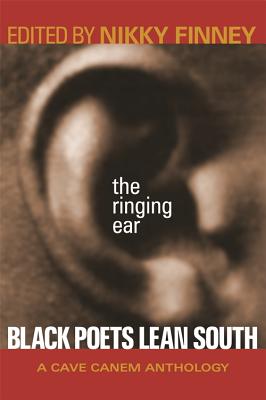 The Ringing Ear: Black Poets Lean South (Cave Canem Anthology)
The Ringing Ear: Black Poets Lean South (Cave Canem Anthology)
by Nikky FinneyUniversity of Georgia Press (Mar 25, 2007)
Read Detailed Book Description
The South: to render all that it means to an African American takes someone with acutely tuned senses, someone with a patience, a passion even, for the region’s history and contradictions. It takes a poet. In this new anthology, the first of its kind, more than one hundred contemporary black poets laugh at and cry about, pray for and curse, flee and return to—the South.
Voices new to the scene appear in The Ringing Ear alongside some of the leading names in American literature today, including Sonia Sanchez, Yusef Komunyakaa, Harryette Mullen, Nikki Giovanni, Kevin Young, Cornelius Eady, and Al Young. The southern worlds opened up by these poets are echoed in how their poems are grouped, under headings like "Music, Food, and Work: Heeding the Lamentation and Roar of Things Made by Hand," or "Religion and Nature: The Lord Looks Out for Babies and Fools," or "Love, Flesh, and Family: The Hush and Holler Portraits."
"Not all of us on these pages have come to or from the South by the same dirt road," says anthology editor Nikky Finney. "We have not chosen our dark olive words from the same patch of earth. Some have come by way of birth and others have followed street musicians and urban corner preachers, dream and myth, to stand before its pine and iron gates."
 Reminiscences of My Life in Camp: An African American Woman’s Civil War Memoir
Reminiscences of My Life in Camp: An African American Woman’s Civil War Memoir
by Susie King TaylorUniversity of Georgia Press (Apr 25, 2006)
Read Detailed Book Description
Near the end of her classic wartime account, Susie King Taylor writes, “there are many people who do not know what some of the colored women did during the war.” For her own part, Taylor spent four years—without pay or formal training—nursing sick and wounded members of a black regiment of Union soldiers. In addition, she worked as a camp cook, laundress, and teacher. Written from a perspective unique in the literature of the Civil War, Reminiscences of My Life in Camp not only chronicles daily life on the battlefront but also records interactions between blacks and whites, men and women, and Northerners and Southerners during and after the war.
Taylor tells of being born into slavery and of learning, in secret, to read and write. She describes maturing under her wartime responsibilities and traveling with the troops in South Carolina, Georgia, and Florida. After the war, Taylor dedicated herself to improving the lives of black Southerners and black Union Army veterans. The final chapters of Reminiscences are filled with depictions of the racism to which these efforts often exposed her.
This volume reproduces the text of the original 1902 edition. Catherine Clinton's new introduction provides historical context for the events that form the backdrop of Taylor's memoir, as well as for the problems of race and gender it illuminates.
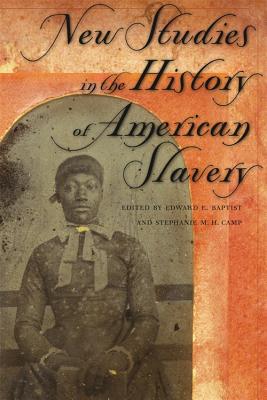 New Studies in the History of American Slavery
New Studies in the History of American Slavery
by Edward E. Baptist and Stephanie CampUniversity of Georgia Press (Feb 06, 2006)
Read Detailed Book Description
These essays, by some of the most prominent young historians writing about slavery, fill gaps in our understanding of such subjects as enslaved women, the Atlantic and internal slave trades, the relationships between Indians and enslaved people, and enslavement in Latin America. Inventive and stimulating, the essays model the blending of methods and styles that characterizes the new cultural history of slavery’s social, political, and economic systems.Several common themes emerge from the volume, among them the correlation between race and identity; the meanings contained in family and community relationships, gender, and life’s commonplaces; and the literary and legal representations that legitimated and codified enslavement and difference. Such themes signal methodological and pedagogical shifts in the field away from master/slave or white/black race relations models toward perspectives that give us deeper access to the mental universe of slavery.Topics of the essays range widely, including European ideas about the reproductive capacities of African women and the process of making race in the Atlantic world, the contradictions of the assimilation of enslaved African American runaways into Creek communities, the consequences and meanings of death to Jamaican slaves and slave owners, and the tensions between midwifery as a black cultural and spiritual institution and slave midwives as health workers in a plantation economy.Opening our eyes to the personal, the contentious, and even the intimate, these essays call for a history in which both enslaved and enslavers acted in a vast human drama of bondage and freedom, salvation and damnation, wealth and exploitation.
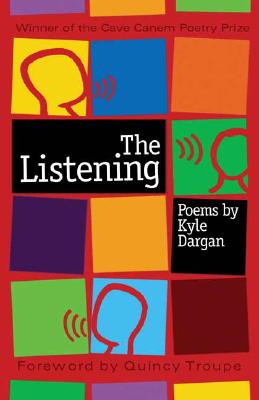 The Listening: Poems
The Listening: Poems
by Kyle DarganUniversity of Georgia Press (Sep 20, 2004)
Read Detailed Book Description
Kyle Dargan’s debut collection of poetry, The Listening, searches through the cluttered surface of contemporary life to tune into the elemental sounds within the marrow of living/life. Throughout the collection, Dargan interweaves elements of his heritage with the present day?jazz influences blend with hip-hop; neoslave narratives run parallel with the intimate tale of civil rights leaders; post-9/11 America is juxtaposed with family portraits of the sixties and seventies?to reveal the continuous, though ever changing, music of the world around us. Whether capturing the famous Ali-Frazier fight in Manila or a trip to the local barbershop, Muddy Waters or boyhood blacktop games, Dargan gives voice to the most poignant and fleeting aspects of our everyday existence. With singular incisiveness and vigor, these poems act simultaneously as psalms and elegies, praising life at the same time they lament its inevitable passing.
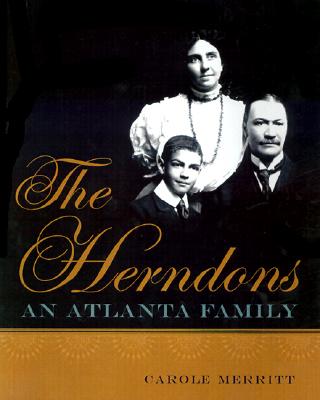 The Herndons: An Atlanta Family
The Herndons: An Atlanta Family
by Carole MerrittUniversity of Georgia Press (Jun 14, 2002)
Read Detailed Book Description
Born a slave and reared a sharecropper, Alonzo Herndon (1858-1927) was destined to drudgery in the red clay fields of Georgia. Within forty years of Emancipation, however, he had amassed a fortune that far surpassed that of his White slave-master father.Through his barbering, real estate, and life insurance ventures, Herndon would become one of the wealthiest and most respected African American business figures of his era. This richly illustrated book chronicles Alonzo Herndon’s ascent and his remarkable family’s achievements in Jim Crow Atlanta.In this first biography of the Herndons, Carole Merritt narrates how Herndon nurtured the Atlanta Life Insurance Company from a faltering enterprise he bought for $140 into one of the largest Black financial institutions in America; how he acquired the most substantial Black property holdings in Atlanta; and how he developed his barbering business from a one-chair shop into the nation’s largest and most elegant parlor, the resplendent, twenty-three chair "Crystal Palace" in the heart of White Atlanta.The Herndons’ world was the educational and business elite of Atlanta. But as Blacks, they were intimately bound to the course of Black life. The Atlanta Race Riot of 1906 and its impact on the Herndons demonstrated that all Blacks, regardless of class, were the victims of racial terrorism.Through the Herndons, issues of race, class, and color in turn-of-the-century Atlanta come into sharp focus. Their story is one of by-the-bootstraps resolve, tough compromises in the face of racism, and lasting contributions to their city and nation.
 Leaving Saturn: Poems
Leaving Saturn: Poems
by Major JacksonUniversity of Georgia Press (Feb 08, 2002)
Read Detailed Book Description
Leaving Saturn, chosen by Al Young as the winner of the Cave Canem Poetry Prize, is an ambitious and honest collection. Major Jackson, through both formal and free verse poems, renders visible the spirit of resilience, courage, and creativity he witnessed among his family, neighbors, and friends while growing up in Philadelphia. His poems hauntingly reflect urban decay and violence, yet at the same time they rejoice in the sustaining power of music and the potency of community. Jackson also honors artists who have served as models of resistance and maintained their own faith in the belief of the imagination to alter lives. The title poem, a dramatic monologue in the voice of the American jazz composer and bandleader Sun Ra, details such a humane program and serves as an admirable tribute to the tradition of African American art. Throughout, Jackson unflinchingly portrays our most devastated landscapes, yet with a vividness and compassion that expose the depth of his imaginative powers.
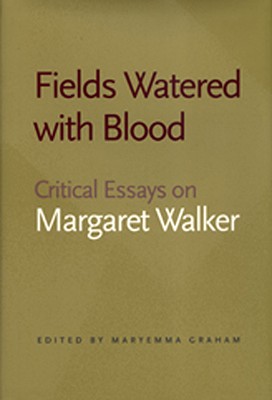 Fields Watered with Blood
Fields Watered with Blood
by Maryemma GrahamUniversity of Georgia Press (Feb 01, 2001)
Read Detailed Book Description
A critical assessment of the full scope of Margaret Walker’s literary career. The contributors reveal the complex interplay of concerns and themes in Walker’s writing and remark on how her emphases on spirituality and on dignity in her daily life make themselves felt in her writings.
 Youngblood
Youngblood
by John Oliver KillensUniversity of Georgia Press (Apr 06, 2000)
Read Detailed Book Description
John Oliver Killens’s landmark novel of social protest chronicles the lives of the Youngblood family and their friends in Crossroads, Georgia, from the turn of the century to the Great Depression. Its large cast of powerfully affecting characters includes Joe Youngblood, a tragic figure of heroic physical strength; Laurie Lee, his beautiful and strong-willed wife; Richard Myles, a young high school teacher from New York; and Robby, the Youngbloods’ son, who takes the large risk of becoming involved in the labor movement.
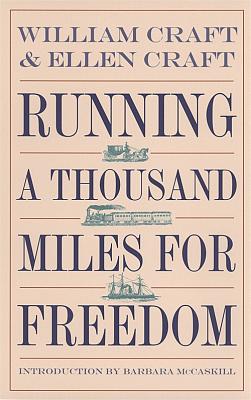 Running a Thousand Miles for Freedom
Running a Thousand Miles for Freedom
by William Craft and Ellen CraftUniversity of Georgia Press (Apr 01, 1999)
Read Detailed Book Description
An Important Contribution to the Birth of African American Literature
In 1848 William and Ellen Craft made one of the most daring and remarkable escapes in the history of slavery in America. With fair-skinned Ellen in the guise of a white male planter and William posing as her servant, the Crafts traveled by rail and ship — in plain sight and relative luxury — from bondage in Macon, Georgia, to freedom first in Philadelphia, then Boston, and ultimately England.
This edition of their thrilling story is newly typeset from the original 1860 text. Eleven annotated supplementary readings, drawn from a variety of contemporary sources, help to place the Crafts’ story within the complex cultural currents of transatlantic abolitionism.
 Generations In Black And White: Photographs From The James Weldon Johnson Memorial Collection
Generations In Black And White: Photographs From The James Weldon Johnson Memorial Collection
by Carl Van VechtenUniversity of Georgia Press (Dec 01, 1993)
Read Detailed Book Description
What makes this book so fascinating is the number of photographs it contains of the most important personalities of the Harlem Renaissance. This treasure of a book contains photographs of many of the AA authors highlighted on this web site; including W. E. B. Du Bois, Claude McKay, Nella Larsen, Zora Neale Hurston, Langston Hughes, Arna Bontemps, Countee Cullen, Richard Wright, Ann Petry, John O. Killens, and James Baldwin. — AALBC.com
This portfolio of eighty-three photographs constitutes a stunning celebration of African American achievement in the twentieth century. Carl Van Vechten, a longtime patron of black writers and artists, took these photographs over the course of three decades—primarily as gifts to his subjects, such luminaries as W. E. B. Du Bois, Langston Hughes, Bessie Smith, Billie Holiday, Joe Louis, James Baldwin, Richard Wright, Ruby Dee, Lena Horne, and James Earl Jones.The photographs Rudolph P. Byrd has selected for this volume come from the James Weldon Johnson Memorial Collection of Negro Arts and Letters, which Van Vechten established at Yale University. Byrd has arranged the images chronologically, according to the time at which each subject emerged as a vital presence in African American tradition.Complementing the photographs are a substantial introduction by Byrd, biographical sketches of each subject, and poems by the noted writer Michael S. Harper. The result is a volume of beauty and power, a record of black excellence that will engage and inform new generations.
 Somewhat More Independent: The End of Slavery in New York City, 1770-1810
Somewhat More Independent: The End of Slavery in New York City, 1770-1810
by Shane WhiteUniversity of Georgia Press (Mar 01, 1991)
Read Detailed Book Description
"White’s exact, well-written, and modulated monograph is the finest study to date of an important subject… . His book is an eloquent, unromantic account of the creativity and stamina of thousands of American slaves and ex-slaves whom historians have ignored for far too long."—"Journal of Interdisciplinary History"

